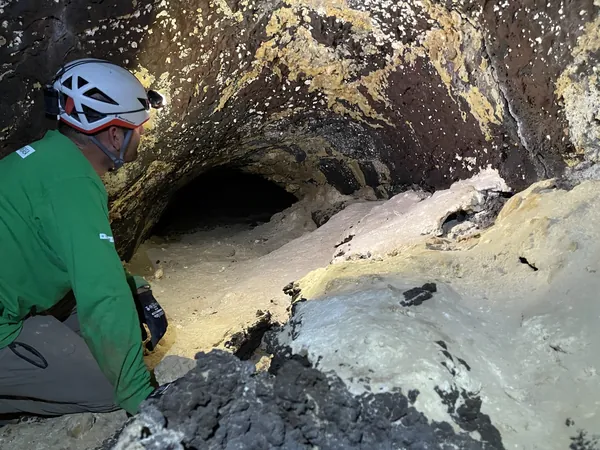
Shocking Discovery: Microplastics May Be Shaping Our Weather!
2024-11-17
Author: Jacques
Shocking Discovery: Microplastics May Be Shaping Our Weather!
In an astonishing twist of physics, scientists reveal that microplastic pollution might play a significant role in weather patterns and climate behavior. Clouds, which form when water vapor clings to tiny particles like dust and transforms into liquid droplets or ice crystals, can now be influenced by microplastics—tiny fragments of plastic less than 5 millimeters in size that are pervasive in our environment.
A newly published study demonstrates that these microplastic particles can produce ice crystals at temperatures ranging from 5 to 10 degrees Celsius (9 to 18 degrees Fahrenheit) higher than what is needed for the formation of ice in droplets devoid of these particles. This breakthrough suggests that microplastics in the atmosphere could enable cloud formation even under conditions that would normally be too warm—a discovery that could have profound implications for global weather and climate patterns.
Microplastics: The Unseen Enemy Affecting Weather?
The implications of microplastics within clouds are extensive. Ice plays a crucial role in the precipitation process; in many regions, precipitation begins as ice particles. When temperatures are suitable, these ice crystals attract surrounding water vapor, growing heavier until they eventually fall as rain or snow. In the absence of ice, clouds may dissipate before producing any precipitation, leading to dry conditions.
Most people learn that water freezes at 32 degrees Fahrenheit (0 degrees Celsius), but water can remain liquid at even lower temperatures without particles to initiate freezing. Microplastics may serve this essential role, acting as nuclei for ice crystals to form, thereby potentially increasing rain and snowfall.
Clouds have a multifaceted effect on our climate as well: they reflect sunlight away from the Earth, offering a cooling effect, while also absorbing some of the heat radiated from the Earth, which causes warming. The balance of liquid water versus ice in clouds is crucial; if microplastics can increase ice particle presence, this could significantly alter how clouds reflect sunlight and interact with the planet's energy balance.
Research Insights and Future Directions
To evaluate the potential of microplastics as nuclei for ice formation, researchers tested various common plastics, including low-density polyethylene and polypropylene, under different atmospheric conditions. Surprisingly, most of the evaluated plastics caused 50% of water droplets to freeze at minus 8 degrees Fahrenheit (minus 22 degrees Celsius). This aligns with separate findings from Canadian researchers, highlighting a trend where microplastics lead to ice formation at elevated temperatures.
Interestingly, exposure to ultraviolet radiation, ozone, and acids diminished the ice nucleation activity, indicating that even slight changes to the microplastic’s surface can affect its behavior. Nevertheless, the particles still demonstrated the ability to nucleate ice, suggesting that microplastics could significantly influence cloud dynamics.
However, there are still critical gaps in our understanding. To fully grasp how microplastics affect weather and climate, researchers must measure their concentrations in various atmospheric layers where clouds form and compare these levels to the presence of other traditional ice nucleators like mineral dust and biological particles.
As the world grapples with the mounting consequences of plastic pollution, this research opens the door to a new dialogue about the unseen impacts of microplastics on our environment. Will this newfound knowledge spark a global movement towards addressing plastic pollution? The answer remains uncertain, but the stakes have never been higher.









 Brasil (PT)
Brasil (PT)
 Canada (EN)
Canada (EN)
 Chile (ES)
Chile (ES)
 España (ES)
España (ES)
 France (FR)
France (FR)
 Hong Kong (EN)
Hong Kong (EN)
 Italia (IT)
Italia (IT)
 日本 (JA)
日本 (JA)
 Magyarország (HU)
Magyarország (HU)
 Norge (NO)
Norge (NO)
 Polska (PL)
Polska (PL)
 Schweiz (DE)
Schweiz (DE)
 Singapore (EN)
Singapore (EN)
 Sverige (SV)
Sverige (SV)
 Suomi (FI)
Suomi (FI)
 Türkiye (TR)
Türkiye (TR)